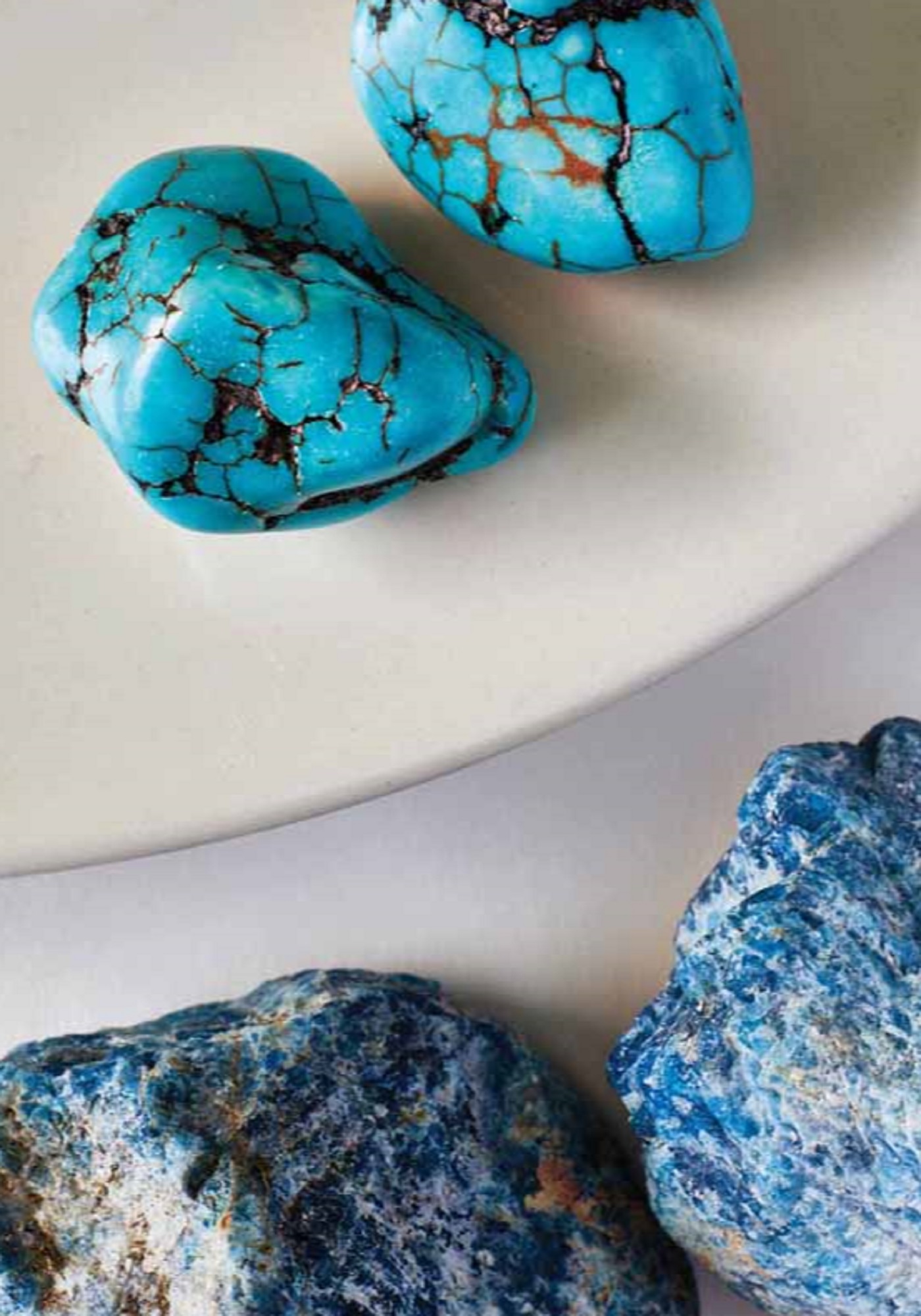Turquoise has been a key market element in Turkish bazaars for centuries, originating from mines in Central Asia. It symbolized wisdom, nobility, and immortality among many precious values. The stone was used by the Ancient Egyptians, Persians, Chinese, Aztecs, and Native North Americans to preserve various values including power, luck, and protection. In America, one of its uses was to protect graves. Turquoise jewelry has made its presence felt around the globe, notably in Mexico and Argentina.
Turquoise stone, also known as “Firuze,” is a natural gem revered for encompassing communication, loyalty, and friendship. Its physical and mental benefits are manifold. Historically, Turks used it to craft war equipment, which is why it’s occasionally called “Turkish stone.” In ancient times as well as today, turquoise has been highly sought after for creating jewelry, ornaments, and decorative items due to its vibrant sky-blue color and opal-like, waxy texture. The most precious turquoise stones are those that boast an unblemished sky-blue hue, devoid of any lines or inclusions.
What Are the Characteristics of Turquoise (Firuze) Stone?
Turquoise (Firuze) stone is a matte, semi-hard gemstone that captivates attention with its wax-like texture and striking turquoise blue color. It’s known for the following characteristics:
- Nicknamed “Turkish stone” as the French termed it turquoise, symbolizing its significance to Turkish traders.
- It falls under the aluminum phosphate category in mineral classification.
- Its crystal system is triclinic.
- The hardness rating is between 5 and 6 on the Mohs scale.
- Major sources include Afghanistan, Australia, China, the United States, France, Iran, Israel, Mexico, and Tanzania.
- Its most common hues are blue and sky blue.
- Associated with water, fire, and the sun as symbols.
- Its name is derived from the turquoise color it exhibits.
- Has a hardness level around 5.5 to 6, indicating moderate durability.
- Specific gravity ranges between 2.60 and 2.91.
- Boasts a glassy to waxy luster.
- Colors include bluish-grey, greenish-blue, turquoise, and sky blue.
- Quality-wise, turquoise can be classified into seven grades from highest to lowest quality: Ebuishaki, Ezheri, Süleymani, Zerhum, Haki, Keftari, and Sefidi zerdbam.
- Because it contains water, exposure to sunlight and heat can cause damage.
- Authentic turquoise is porous, allowing it to absorb water.
What Are the Benefits of Turquoise Stone?
The benefits of Turquoise (Firuze) stone manifest both physically and spiritually. Like many natural stones, Turquoise offers a range of health and spiritual benefits.
- Linked to the throat chakra, it alleviates issues in the area.
- Effective against throat soreness and respiratory problems.
- Acts as a supplementary treatment for allergies and migraines.
- Eliminates breathing difficulties at their root.
- Provides a cooling effect, soothing those with breath and lung issues.
- Benefits rheumatism and reduces inflammation.
- One of the most potent stones for boosting immunity.
- Aids in the healthy absorption of nutrients.
- Diminishes anxiety and sudden mood swings.
- Restores balance between the physical and spiritual, ending confusion.
- Revitalizes those feeling drained, bringing them back to life with positive energies.
- Encourages the release of emotions, preventing feelings of being trapped.
- Delivers truths in the most gentle and graceful way possible.
- Facilitates understanding of the true nature of events.
- Removes feelings of aggression and dispels oppressive emotions.
- Provides courage, strength, and mental peace during tough times.
- Functions as a communication stone, enhancing self-talk.
- Steers people away from stress.
- Supports the respiratory system, aiding in the healing of lung diseases and allergies.
- Prevents the formation of cataracts.
- Regulates blood pressure.
- Brings success.
- Protects against the evil eye.
- Effective against feelings of anxiety.
- Has therapeutic effects on sexual issues.
- Helps alleviate sadness in grieving individuals.
- Clears negativity from the environment and the person, while spreading positive energy.
- Enhances empathy, making individuals more compassionate and understanding.
What Does the Turquoise Stone Mean?
The meaning of the Turquoise stone is rooted in its association with Turkish culture, as evident from its French origin meaning Turkish. This connection arises from its frequent sale by Turkish merchants in Central Asian markets. Some researchers suggest that turquoise was introduced to Europe via Turkey. Believed to have healing and mystical properties, those who wear this stone feel endowed with luck and strength.
The meaning of Turquoise relates to balance. It is linked with balancing both mental well-being and the physical functioning of organs. While it’s popularly chosen as an accessory, its healing properties make it a viable therapeutic asset.
How to Determine if Turquoise Stone is Genuine?
To identify genuine Turquoise, it’s essential to start with the price. Stones that are too cheap are likely not authentic. Testing the stone with a piece of cotton or a Q-tip for any color smudging is a good indicator; if blue color rubs off revealing white, it’s a dyed howlite stone. Additionally, as Turquoise is relatively hard, stones with a softer texture are imitations.
Given its captivating turquoise color, identifying genuine Turquoise involves several steps:
- Chipping off a small piece to compare the interior and exterior colors can confirm authenticity; if the colors match, it’s genuine. Otherwise, it’s an imitation.
- Many fakes are painted, so exposing the stone to fire may burn off the paint, releasing a chemical smell. A lack of such odor indicates a genuine stone.
How to Clean Turquoise Stone?
Cleaning Turquoise stone simply requires clear water. Rinsing it under running water for 4 or 5 minutes cleanses it of negative influences. Alternatively, soaking it in still water for about 10 minutes can also refresh the stone.
Cleaning Turquoise (Firuze) stone can also be effectively done with seawater or saltwater. Placing the stone in a bowl of such water for 10 minutes ensures its cleanliness. Another method involves burying it in the earth for 24 hours to reset its energy.
